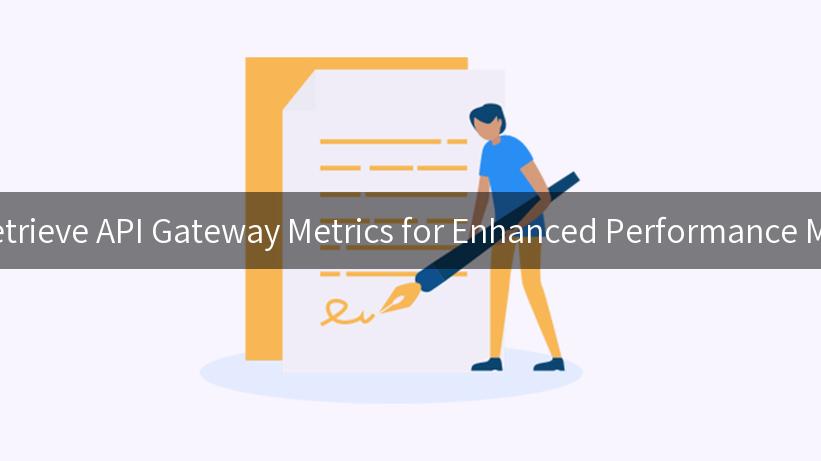
Monitoring the performance of your APIs is crucial for ensuring that applications run smoothly and reliably. In this article, we will delve into how to retrieve API gateway metrics to enhance performance monitoring, especially focusing on the integration of services like LiteLLM and the LLM Gateway. Effective monitoring can help isolate issues swiftly and improve the user experience, leading to a more efficient use of resources.
Understanding API Gateways
Before we dive into metrics retrieval, let’s establish what an API gateway is. An API gateway acts like a single entry point to multiple backend services. It is responsible for transforming the client requests into backend service requests, managing traffic, enforcing security, and monitoring API utilization. Proper performance monitoring of this layer can reveal critical insights into system health and where improvements can be made.
The Importance of API Monitoring
Monitoring API calls allows organizations to maintain the high availability and performance of their applications. Key metrics to track include request count, error rates, response times, and latency. These metrics can help teams quickly identify performance bottlenecks, troubleshoot issues, and ultimately improve service reliability.
Key Metrics to Monitor
When monitoring API gateways, here are some essential metrics to keep an eye on:
| Metric |
Description |
| Request Rate |
Number of API calls made over a specific time period. |
| Error Rate |
Percentage of failed requests compared to total requests. |
| Response Time |
Average time taken to respond to requests. |
| Latency |
Time taken for requests to travel from client to server. |
| Resource Usage |
Memory and CPU usage by the API services. |
Setting Up Basic Authentication for API Calls
Before we can retrieve API gateway metrics, we need to establish a secure way to make API calls. Typically, this is done using one of three common methods: Basic Auth, AKSK (Access Key Secret Key), or JWT (JSON Web Token). Here’s a brief overview of how these authentication mechanisms work:
-
Basic Auth: This method involves sending a username and password in the request header, encoded in Base64. While it’s simple to implement, it has security limitations unless combined with HTTPS.
-
AKSK: This method uses an access key and a secret key for authorization. It is generally more secure than Basic Auth and is suitable for server-to-server API communication.
-
JWT: This method uses a token-based approach to ensure secure communications. A JSON web token is created, signed, and sent with each request, providing a more secure and scalable solution.
Example of Using Basic Auth with curl
To demonstrate Basic Auth in API calls, here’s an example showing how to retrieve metrics from an API endpoint:
curl --location 'http://your-api-gateway/path/to/metrics' \
--user 'username:password' \
--header 'Content-Type: application/json'
Make sure to replace your-api-gateway, path/to/metrics, username, and password with your actual credentials.
Retrieving API Gateway Metrics
Now that we have our authentication method established, we can access the API gateway to retrieve metrics. In our case, let’s consider the usage of LiteLLM and the LLM Gateway to assist us in making API calls efficiently.
Using LiteLLM for API Operations
LiteLLM simplifies interactions with APIs that employ natural language processing capabilities. Using its capabilities, you can craft API calls to not only retrieve metrics but also transform the data for analysis and reporting.
How to Get API Gateway Metrics
To retrieve the metrics, follow these steps:
-
Authenticate to the API Gateway: Use one of the authentication methods outlined above to gain access.
-
Make the API Call: Use curl or any other HTTP client to make a request to the API gateway endpoint designed for metrics. Here’s a sample command using JWT:
curl --location 'http://your-api-gateway/metrics' \
--header 'Authorization: Bearer YOUR_JWT_TOKEN' \
--header 'Content-Type: application/json'
- Analyze the Response: The response will typically be in JSON format containing the various metrics.
Example Response Structure
A typical response from an API gateway metrics request might look like this:
{
"request_count": 1200,
"error_rate": 0.05,
"average_response_time": 250,
"latency": 100,
"resources": {
"cpu_usage": "70%",
"memory_usage": "80%"
}
}
Processing the Metrics Data
Once you have retrieved the metrics, you can process this data to generate reports, analyze trends, or even build alerts for when certain thresholds are crossed. Using tools like Grafana can help visualize this data effectively.
APIPark is a high-performance AI gateway that allows you to securely access the most comprehensive LLM APIs globally on the APIPark platform, including OpenAI, Anthropic, Mistral, Llama2, Google Gemini, and more.Try APIPark now! 👇👇👇
Conclusion: Enhancing Performance Monitoring
In conclusion, retrieving and analyzing API gateway metrics is vital for enhanced performance monitoring. With the help of LiteLLM, LLM Gateway, and relevant security measures like Basic Auth, AKSK, or JWT, organizations can not only maintain operational efficiency but also anticipate and address performance issues before they affect end-users.
By implementing proactive monitoring practices, you can optimize API responses, improve system reliability, and ultimately provide a better experience for users while ensuring the effective utilization of resources. The insights gained from your API calls can be invaluable in driving further improvements in your organization’s API strategies.